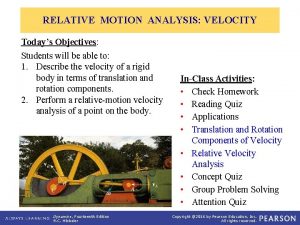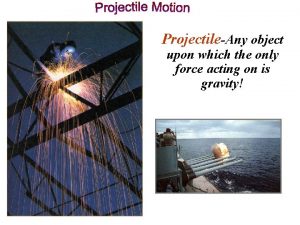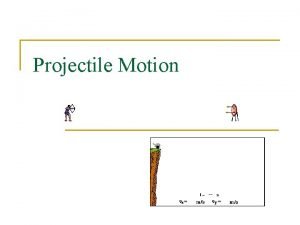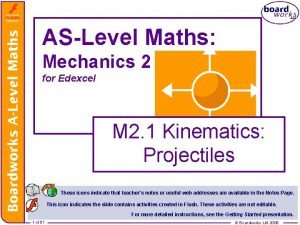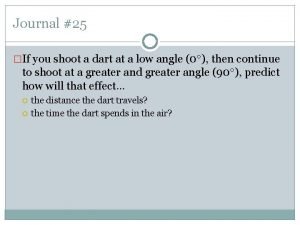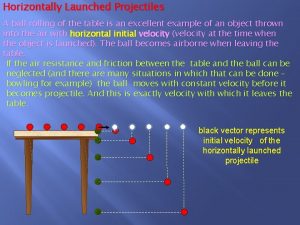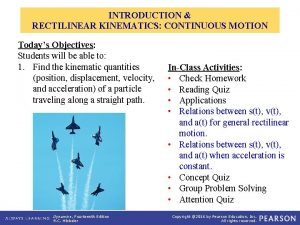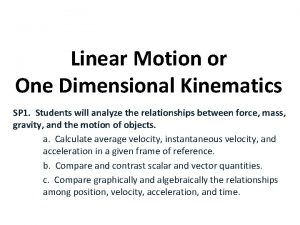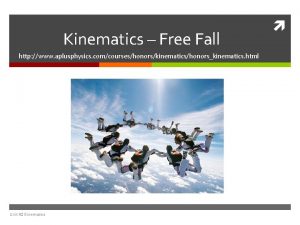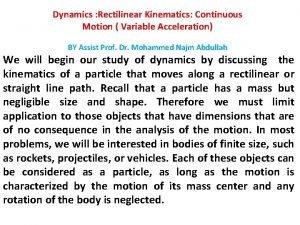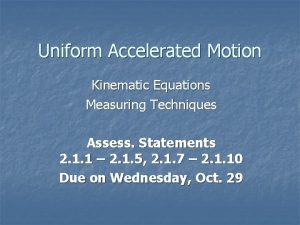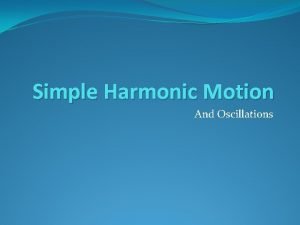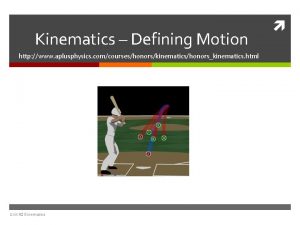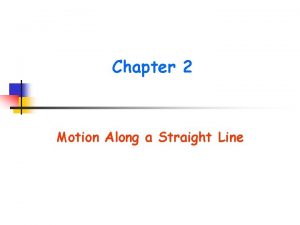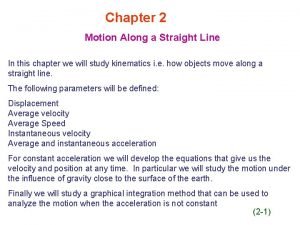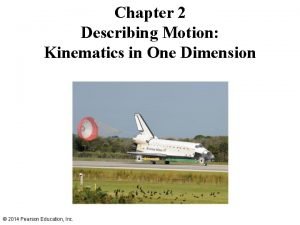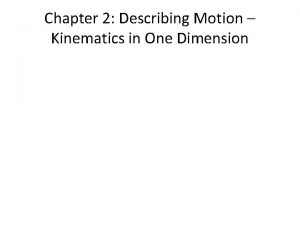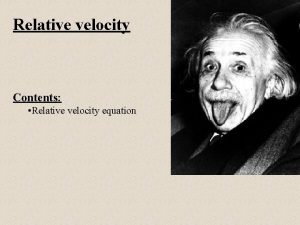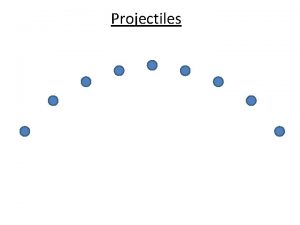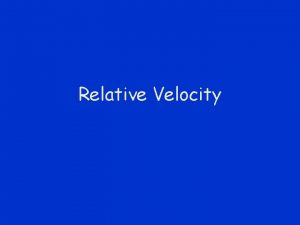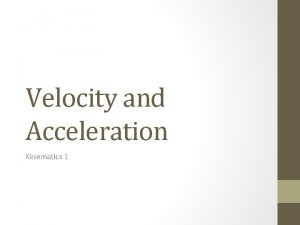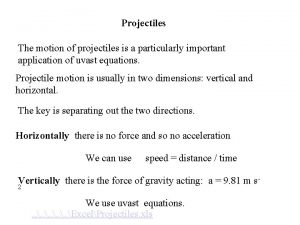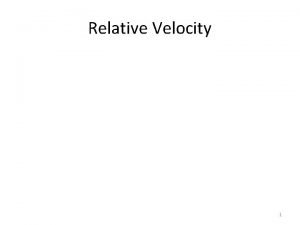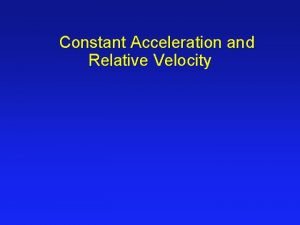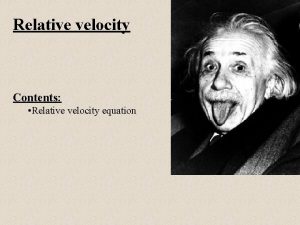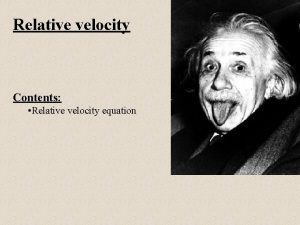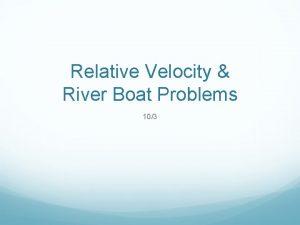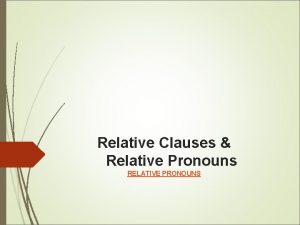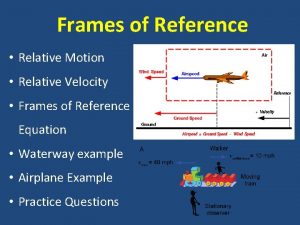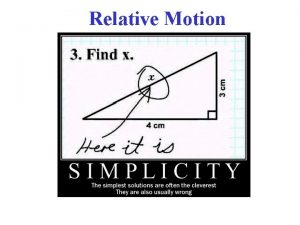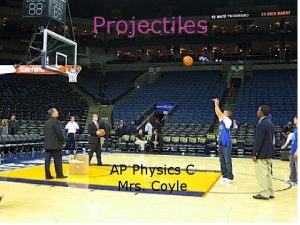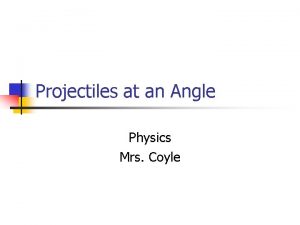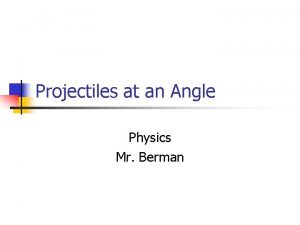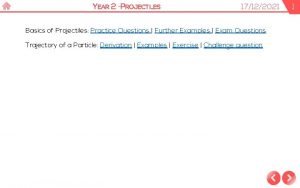Last Time Kinematics TwoDimensional Motion Projectiles Relative Velocity



























- Slides: 27

• Last Time: Kinematics: Two-Dimensional Motion Projectiles, Relative Velocity • Today: Dynamics: Forces Newton’s Laws of Motion HW #3 due Tuesday, Sept 21, 11: 59 p. m. (Last HW before Exam #1) Recitation Quiz #3 tomorrow Today: Have to end office hours at 3: 30 p. m. 1

• Recitation Quizzes : In general, formula sheets will not be provided. 2

Who Was Isaac Newton ? • English physicist, mathematician, astronomer, philosopher, and theologian, 1643 – 1727. • Widely considered to be perhaps the most influential scientist ever. • Developed calculus (with Gottfried Leibniz). • Developed theory of color. • Developed mechanics (study of motion) o Three Laws of Motion • Developed theory of gravitation. 3

Contact Forces • What is a force? Forces commonly thought of as a “pull” or a “push” on an object. • These are examples of “contact forces”. o Result from physical contact between two objects. 4

Field Forces • There also forces in physics which do NOT arise from actual physical contact between objects. o Gravity is one example of an “action-at-a-distance” force. • Gravity is an example of a “field force”. o Objects are said to interact with a “field”. o “Field” concept due to Michael Faraday (1791 – 1867). 5

Fundamental Forces of Nature Strong Electromagnetic quarks, gluons, < 10 – 15 m electric, magnetic, Weak Gravity radioactivity, < 10 – 15 m planet orbits, etc. , 6

Newton’s First Law of Motion • Before Galileo, it was thought that the natural state of matter was the state of rest (i. e. , no motion). • By considering thought experiments of frictionless surfaces, Galileo concluded, instead, an object will tend to continue in its current state of motion. Newton’s First Law of Motion An object moves with a velocity that is constant in magnitude and direction, unless acted on by a non-zero net force. Net Force The vector sum of all external forces exerted on an object. 7

External vs. Internal Forces • External forces originate from the object’s environment. o If an object’s velocity is constant (i. e. , not changing in either magnitude or direction), then the acceleration is zero, meaning the net external force acting on it must be zero. • Internal forces originate within the object itself, and cannot change the object’s velocity. o They can, however, change the object’s rate of rotation (discuss later when we study rotational motion …) 8

Mass and Inertia • Inertia is the tendency of an object to continue in its original state of motion. vs. • Mass is a measure of an object’s resistance to change in motion due to a force. The greater the mass, the less it accelerates under a given force. • SI unit of mass is the kilogram (kg). • An object’s mass is the same, no matter where in the universe. Mass is NOT equivalent to weight ! 9

Newton’s Second Law of Motion • First Law: Tells us what happens to an object with no net force acting on it NOTHING !! • Second Law: Describes what happens to an object that DOES have a net force acting on it. Newton’s Second Law of Motion The acceleration a of an object is directly proportional to the net force acting on it, and inversely proportional to its mass. Σ: “sum of” acceleration vector sum of all external forces 10

What F = m a Means • What Newton’s Second Law of Motion tells us is that a net force causes a CHANGE in an object’s velocity (i. e. , in its motion). Ø If no net force, the object’s acceleration is zero, and so its velocity must be constant. 11

F = ma • Newton’s Second Law of Motion is a VECTOR equation. It can be decomposed into separate x-, y-, and z-components as: • What does this mean? For example, suppose net force only along y-axis (Fx = Fz = 0). This means ax = az = 0. Acceleration ONLY along y-direction ! • Acceleration will be in the direction of the net force. 12

F = ma • The VECTOR equation permits us to relate a net force in a particular direction to the acceleration in that same direction. Acceleration always along direction of force ! • If all we care about are the MAGNITUDES of the net force and the acceleration, we simply have: magnitude of force magnitude of acceleration 13

Units for Force and Mass Acceleration in m/s 2 SI unit force is the “Newton”. • Defined to be the force acting on a 1 kg mass that produces an acceleration of 1 m/s 2. SI unit for mass is the kilogram (kg). 1 Newton (N) = 1 kg m/s 2 14

Example: Multiple Choice #10 (p. 110) If an object moves with a constant velocity v , the magnitude of the net force on the object must be: (a) mg (b) mv (c) ma (d) 0 (e) Not enough information, need to know its mass. 15

Example: 4. 3 A 6. 0 -kg object undergoes an acceleration of 2. 0 m/s 2. (a) What must be the magnitude of the net force acting on it? (b) If this same force is applied to a 4. 0 -kg object, what would its acceleration be? 16

Example: 4. 12 Two forces are applied to a car: (a) What is the resultant (vector sum) of these two forces? (b) If the car has a mass of 3000 kg, what acceleration will it have? (ignore friction) 17

Gravitational Force • The gravitational force is the mutual force of attraction between any two objects in the universe. • It is the weakest of the four fundamental forces. Newton’s Law of Universal Gravitation Every object in the universe attracts every other object with a force that is proportional to the product of their masses, and inversely proportional to the square of the distance between them. Fg: gravitational force in Newtons G : universal gravitation constant = 6. 67 10− 11 N-m 2/kg 2 m 1, m 2 : masses (kg) ; r : distance (m) 18

“Weight” • The “weight”, w, of an object is defined to be the magnitude of the gravitational force acting on the object. w = mg [ just from F = ma ] Thus, weight has units of Newtons (in SI). • The above is only applicable near the surface of Earth (acceleration due to gravity = g near surface of Earth). More generally, at some distance r from the surface of the Earth: ME = Earth’s mass = 5. 98 1024 kg r = distance from center of Earth = RE + height above surface Note: On surface of Earth, r = RE = 6. 38 106 m !! 19

What is a Pound ? • When we calculate the gravitational force, or weight, of an object, in SI units the weight (a force) has units of Newtons. • The “pound” is a unit of force in the English system, where: 1 Newton = 0. 225 lb 20

Example • A person has a mass of 75 kg. What is the person’s weight in pounds on the surface of the Earth? • What would this person’s weight in pounds be on the Moon? ME = 5. 98 1024 kg r. E = 6. 38 106 m MM = 7. 36 1022 kg r. M = 1. 74 106 m 21

Example • A person lands on Planet X, whose mass is 3 times that of Earth’s, and radius half that of Earth’s. What is the person’s weight as a multiple of her Earth weight? 22

Newton’s Third Law of Motion • Newton recognized that a single isolated force doesn’t exist. Instead, forces always exist in “action/reaction” pairs. What would happen, instead, if you ran into a wall? Newton’s Third Law of Motion If objects 1 and 2 interact, the (action) force F 12 exerted by object 1 on object 2 is equal in magnitude but opposite in direction to the (reaction) force F 21 exerted by object 2 on object 1. 23

Newton’s Third Law of Motion • Key Points: The action force is equal in magnitude to the reaction force, but opposite in direction. In all cases, the action/reaction forces act on different objects. They do NOT act on the same object. Example: Gravitational force between two objects #1 F 21 F 12 #2 Magnitude of two forces are equal in magnitude, but opposite in direction ! 24

“Normal Forces” • Suppose a book is sitting on a table. There is a downward gravitational force on it. Why doesn’t it fall through the table? mg 25

“Normal Forces” • Answer: The table exerts an opposite upward force on the book! This is called a “normal force”, n. upward “normal force” mg • Forces acting on the book: downward gravity, upward normal Equal Magnitude, Opposite Direction , Net Force = 0 !! • Reaction to upward normal: force exerted by book on table • Reaction to downward gravity: gravitational force exerted by the book on the Earth 26

Reading Assignment • Next two classes: 4. 5 – 4. 6 Applications of Newton’s Laws of Motion 27
 Aplusphysics kinematics-horizontal kinematics
Aplusphysics kinematics-horizontal kinematics Relative motion analysis using rotating axes
Relative motion analysis using rotating axes Final velocity initial velocity acceleration time
Final velocity initial velocity acceleration time Final velocity initial velocity acceleration time
Final velocity initial velocity acceleration time Jacobian singularity
Jacobian singularity Forces acting on a projectile
Forces acting on a projectile How to calculate final velocity
How to calculate final velocity What is vertical velocity
What is vertical velocity Ques
Ques Projectiles a level maths
Projectiles a level maths Which best describes why projectiles move in a curved path?
Which best describes why projectiles move in a curved path? Higher physics projectiles
Higher physics projectiles The path followed by the projectile is
The path followed by the projectile is A ball rolling horizontally has a velocity that is
A ball rolling horizontally has a velocity that is Tigershark projectiles
Tigershark projectiles Rectilinear kinematics: continuous motion
Rectilinear kinematics: continuous motion Rectilinear kinematics
Rectilinear kinematics What is negative velocity on a graph
What is negative velocity on a graph Kinematics defining motion answer key
Kinematics defining motion answer key Variable acceleration definition
Variable acceleration definition Kinematic equations rearranged
Kinematic equations rearranged Kinematics of simple harmonic motion
Kinematics of simple harmonic motion Aplusphysics kinematics-defining motion answers
Aplusphysics kinematics-defining motion answers Motion along a straight line examples
Motion along a straight line examples Motion along the straight line
Motion along the straight line Describing motion kinematics in one dimension
Describing motion kinematics in one dimension Describing motion kinematics in one dimension
Describing motion kinematics in one dimension Dx=vixt
Dx=vixt

